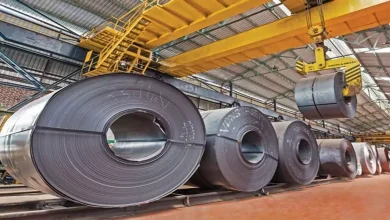Blinkit aims to open 2,000 dark stores by the end of 2026

Delhi. Zomato-owned quick commerce firm Blinkit plans to continue its expansion spree at the cost of low short-term margins. Blinkit CEO Albinder Dhindsa said it aims to increase the number of its dark stores from 639 at present to 2,000 by the end of 2026. “At the moment, we are looking at the possibility of reaching around 2,000 stores for our current business. Most of these stores will be in the top 10 cities of India. Beyond large cities, the size of the market is still unknown. How fast we are able to reach this number of stores will depend on how well we execute it,” Dhindsa said in a letter to shareholders announcing Zomato’s June quarter results. The company has been rapidly expanding its dark store network for the last few quarters. Blinkit added 113 stores in the first quarter (Q1) of financial year 2024-25 (FY25) itself, down from 526 in the previous quarter. “The slow pace of implementation also comes at the cost of short-term margins, which we agree with… If everything goes as planned, we plan to reach 2,000 stores by the end of 2026, while we remain profitable,” Dhindsa said. In Zomato’s June quarter results, Blinkit outperformed the company’s core food delivery business in terms of adjusted revenue as well as gross order value (GOV) growth.
The quick commerce vertical’s GOV and revenue grew over 22 per cent quarter-on-quarter (Q-o-Q), while food delivery grew over 10 per cent in both metrics. The company’s GOV stood at Rs 4,923 crore in the June quarter, up from Rs 4,027 crore a quarter ago. According to Dhindsa, Blinkit’s GOV per store has grown from around Rs 6 lakh per store per day to around Rs 10 lakh today, when it was at 383 stores, to around Rs 10 lakh a year ago, when it was at 639 stores. “For our top 50 stores today, this number is Rs 18 lakh per store per day, and rising. We believe most of our stores today are underutilised from a capacity perspective and hence GOV per store per day should continue to grow from here, even as we aggressively grow the number of stores,” he said. Dhindsa said Blinkit’s GOV growth is primarily driven by incremental growth in consumption, a shift towards instant commerce among consumers from next-day deliveries through e-commerce, and a shift from organised retail to medium and large-sized businesses in large cities.
The average order value (AOV) on the platform has also been growing steadily, aided by the expansion of the range of products such as electronics, beauty and makeup, pet care and toys and games. Blinkit’s AOV stood at Rs 625 in the June quarter, up from Rs 617 in Q4 FY24 and average monthly transacting users grew from 6.4 million to 7.6 million during the same period. “We have been focused from the very beginning on increasing the selection for our customers and offering it to them in the most efficient way possible. This means that the average selection available to customers in any neighbourhood has grown between 4-5 times over the last eight quarters – we are now able to offer up to 25,000 unique SKUs to our customers in some locations,” Dhindsa added. The firm’s management believes that growing competition in the space – Mumbai-based Zepto recently raised $665 million and Flipkart announced its entry into quick commerce – is unlikely to impact Blinkit’s operations. “Of late, some of the (quick commerce) players have been spending more on marketing and subsidies. However, our customers, who value quality and reliability of service, have not been impacted and this is also reflected in our performance for the quarter, where we have grown by over 20 per cent without spending as much or subsidizing as our competitors,” Dhindsa said.





